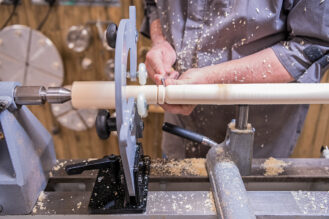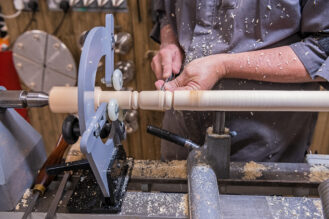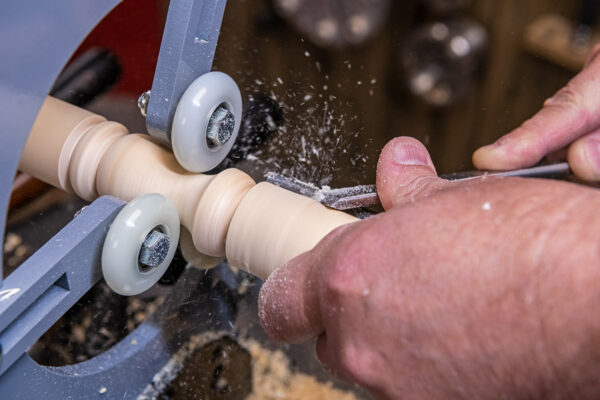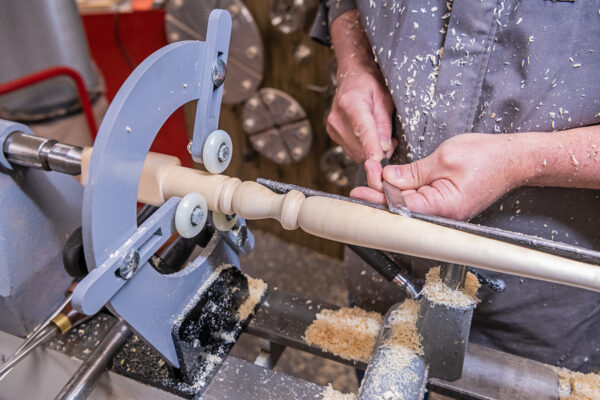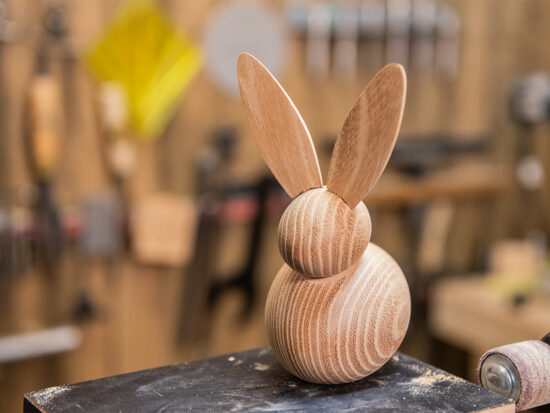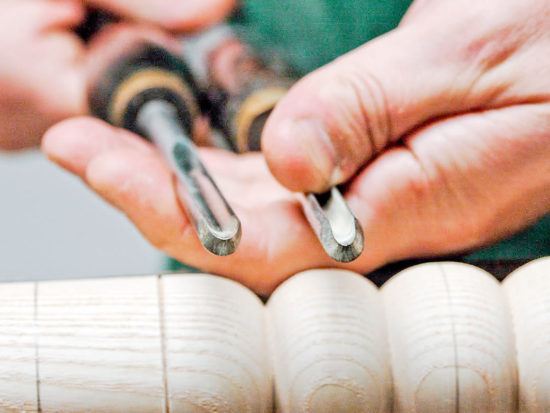Turning Tips | Spindles and Turning Long Workpieces

Turning long workpieces can pose a number of challenges for even the experienced woodturner. The most problematic issue is how to support your workpiece safely during turning.
That's where a centre steady comes in.
When turning long projects, such as staircase spindles, vibration can become a real problem. Sometimes it can be so bad it could prevent you from finishing the job altogether.
Watch our Woodworking Wisdom video, or read our useful guide below, to learn how to minimise vibration when turning long workpieces, as well as tips on how to perfect your staircase spindles.
Vibration free turning
Here, we explore a few tips and tools that could make the job of turning long workpieces much easier and less frustrating.
Most spindles can range from as little as 32mm, right up to 1,100mm long. When a piece is longer, whipping can occur if not supported properly during the turning process. Whipping is when the spindle vibrates so much, the whole length whips in and out causing a bad finish or a big catch in your work.
How to overcome this? The best way to avoid vibration when turning long workpieces, is to use a centre steady. A centre steady is a useful lathe accessory that helps to support the workpiece.
Turning tips using a centre steady
Here we share a few tips for successful turning of longer staircase spindles using a centre steady.
Place your centre steady in position in preparation to turn the first part of the spindle. You can see here that to do this you will need to rough down the first section and allow the steady's rollers to run over it.

Start the shaping at the tailstock end and work back to the headstock. The headstock end is is where the drive comes from and far more stable than the tailstock.

Before any real shaping is done, cut in your pummels, the square ends, with a skew, then rough down the section to be shaped. Again start from the tailstock end and work the shape back to the headstock.
As you shape and move the steady, it may be necessary to have the rollers running in a cove. Finishing off with a skew can be troublesome without a steady, but by moving the steady around you can easily be supported in the weaker positions.
More tips on spindles
Want to know more about spindle turning, read our article on the principles of spindles to learn about the tools to use and the shapes you can make. Or check out our between centre project ideas, from turning your own lamp, to making a rolling pin, there's a project to suit all skills levels.





